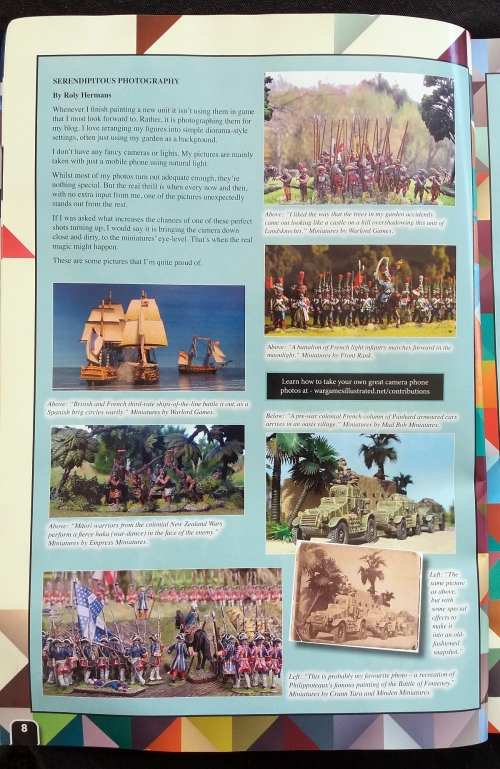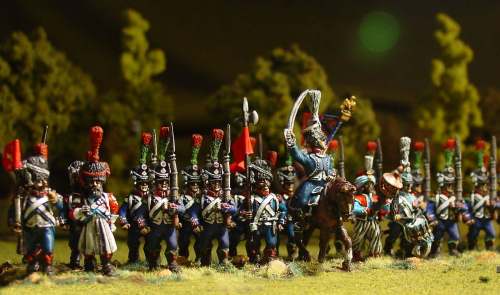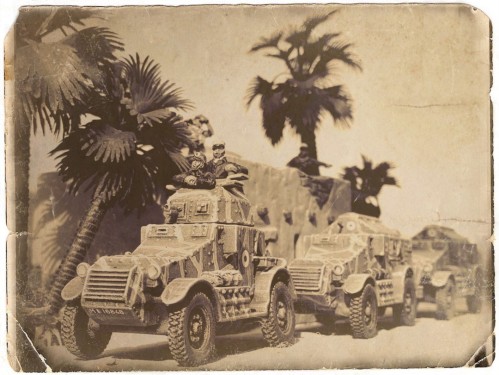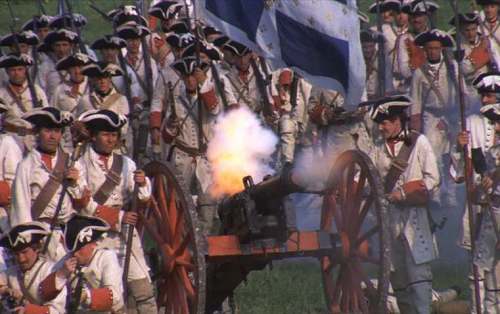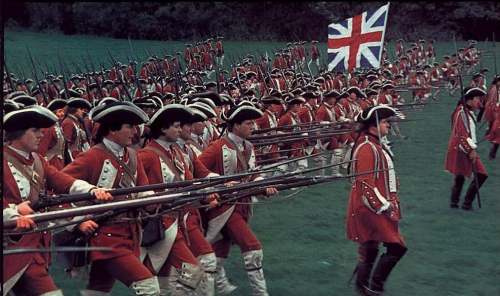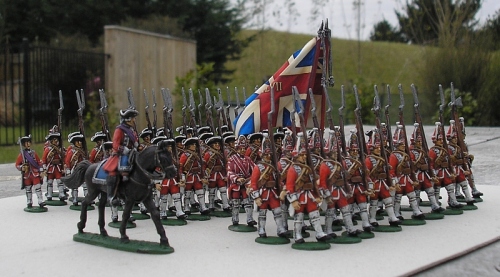
Whilst waiting for an overdue shipment of figures to complete my current painting project (hopefully just held up by the international supply chain issues at the moment) I have done something I have been meaning to do for some time now – rebasing the regiments of my 18th century ‘imagi-nation’, the Barryat of Lyndonia.

When I first began painting the various foreign contingents that make up the Barryat’s army, I was inspired by the big battalions in old wargaming books like Charge! Or How To Play Wargames, with large regiments of several companies of fusiliers and grenadiers being led by figures depicting the officers and NCOs.

I achieved the look I wanted by combining six-figure bases for the soldiers with single bases for their officers, standard-bearers, NCOs and drummers.
But whilst this certainly looked good, it made the units very fiddly to set up and move on the table. So I decided to try something different.

I have now introduced a new basing system that I hope retains that same nostalgic look, but that is much easier to handle and manoeuvre. By using 40x60mm bases, I can fit two ranks of privates with the supernumeries marching in front and behind.
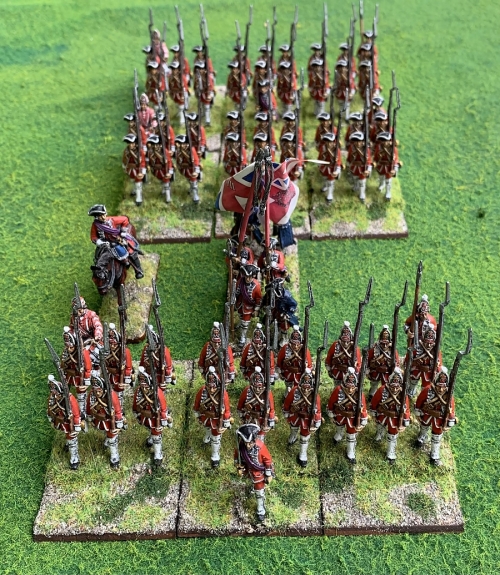
For flexibility, I have kept the standards on separate bases. These bases are narrow, but still as deep as the main bases, which means they line up perfectly when incorporated in their parent unit.
The flag-bases also work perfectly fine when the standard bearers are out of the line, albeit the long narrow bases are a rather odd shape.

I cheated a bit with rebasing, as I didn’t remove all the figures from their existing bases, but merely glued the existing six-figure bases on top of the new bases. As both the old and the new bases were quite thin, the combined height was still acceptable to me.
I then built up the terrain to blend the bases in. Although you can still just make out the line of the old bases (as in this French regiment), it isn’t too obvious.

I did un-base the supernumeries from their old single bases though, such as the officers and standard-bearers in this picture. But as there weren’t so many of them, this wasn’t too onerous a task.

Another advantage of rebasing was that it helped solve a problem I had with charging figures, whose muskets stuck well out in front of the old bases, and were in danger of being bent or broken. The new deeper bases will give them some extra protection frm clumsy fingers.
By the way, for the above picture of a re-based Irish regiment in French service I lined them up on a textured plank that I sometimes use for photographing my miniatures. But note that that plank isn’t part of the basing.

As you can see here, the effect of the drummers and sergeants trailing behind the line gives a great effect.

Likewise, having the officers stand out in front adds an extra dimension. This worked particularly well with my Gardes Françaises, with the officer stepping out to politely doff his hat to the enemy.

For the Gardes Françaises, I massed the drums together to form a ‘drum corps’ standing behind the line. But with all my other regiments, which are organised in a totally fictional way of three companies of 18 privates, each company has its own drummer.

One of the reasons for the separate flags is because I wanted to be able to capture the idiosyncratic way that flags are deployed in the movie Barry Lyndon. For example, in the movie the Prussian regiment carries three flags together that actually belonged to three different regiments.
But if I prefer to pose them as a real-life regiment, I can just remove the flag-bases I don’t need.

Anther advantage of the separate flag-bases is if I choose to play a game using smaller regiments, I can just divide the unit into two, and give each half a flag. Simples!

My light troops had also used the same size bases as the line regiment, but with only three figures per base. I again just glued the old bases on top new 40×60 bases, and arranged their officers and musicians behind or in front.

By staggering the figures, they give the irregular look of troops engaged in la petite guerre (the little war), like these Hanoverian Freytag Jaegers taking on French Volontaires de Clermont-Prince.

The larger bases for the light troops still work fine to depict skirmishing, as you can see with this picture of the Volontaires Étrangers de Clermont-Prince taking pot-shots from behind a fence-line.

My original artillery had separately based gunners, as you can see in the picture near the top of this posting. But I have now reverted to the traditional system of mounting the gunners on the same base as their weapon, as with the above Royal Artillery.

I didn’t feel the cavalry needed re-basing, as their existing system works quite well. So I will leave well enough alone.

So that’s my re-basing done and dusted. Now I just need to head down to my letter-box and hopefully find that my overdue parcel has finally overcome the supply chain problems and arrived safely, so I can get on and finish my next unit!











